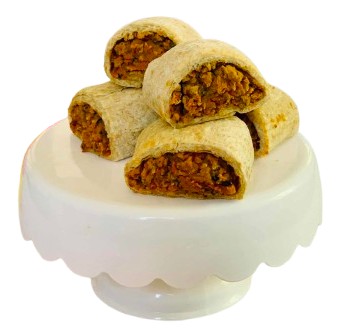Childhood is the starting point where foundations for future health are laid. Just as a car requires the right fuel to run efficiently, a child’s body needs a balanced diet to thrive, play and learn.
Ensuring children adopt a balanced diet is one of the best things parents and caregivers can do. Good nutrition is the gateway to overall well-being, optimal growth and proper development. By instilling healthy eating habits in little ones now, you can also reduce the risk of them developing conditions such as heart disease, diabetes or obesity later in life.
At the Wellbeing Food Company, we’ve mastered this balancing act and are committed to providing nutrition-packed meals to fuel children’s bodies and minds to rev up their engines for peak performance.
The Balanced Diet
Children’s bodies need a diverse range of nutrients to give them energy for every aspect of their development. The Australian dietary guidelines recommend a wide variety of foods from the following five food groups:
- Fruit – fresh, canned, frozen or dried fruits
- Vegetables, legumes and beans
- Grains – breads, rice, pasta and noodles, mostly wholegrain or high cereal fibre types
- Protein – lean meat, fish, poultry, eggs or tofu
- Dairy – milks, yoghurts, cheeses or alternatives.
Fibre-rich foods found in a variety of fruits, vegetables, and whole grains are essential to promote the growth of beneficial bacteria in your child’s gut. The lean protein sources are vital for muscle development and repair of tissues in the body, while dairy with its vitamins and minerals helps build strong bones. Of course, brain boosters like avocados, olive oil, and nuts, packed with healthy fats should also be included.
Children should limit their intake of certain foods to avoid ‘engine’ breakdowns and possible health issues. These include foods containing:
- Added sugar – to avoid these restrict the number of soft drinks and juices with added sugars
- Saturated fats – these mainly come from animal sources of food, such as red meat and hot dogs. Burgers, cakes and ice-cream are other examples of saturated fats and are to be consumed in moderation only.
- Salt – processed foods such as pizza, pasta dishes and chips, often have high amounts of salt. Check nutrition labels and look for products low in sodium.
Developing Healthy Habits
According to the Australian Bureau of Statistics, younger children aged 2-3 years are more likely to meet fruit and vegetable dietary recommendations compared to teens. While this shows a willingness from little ones to embrace healthy eating, the research also highlights children are far more likely to consume fruit rather than vegetables.
Here are some tips to try:
- Build Your Own: Set up a station for salads, wraps or tacos, offering a selection of veggies, lean proteins and whole grains. Children love the autonomy of choosing their ingredients, and it encourages them to try new things.
- Smoothie Time: Let children create their own smoothie combinations from a variety of fruits, yoghurt, spinach and chia seeds. Provide colourful straws and cups to make the experience fun.
- Storytime Adventures: Use a favourite storybook character or movie hero and tell a story about how that character loves eating healthy food and then serve a meal inspired by that character. Let children name the meal.
- Grow Your Own: Plant a small herb or vegetable garden so children can be involved in the process and get some healthy exercise and fresh air as a bonus.
The Wellbeing Company believes that nutritious food serves as fuel for children’s internal engines, helping them power through their day. With our specially built meal plans, we ensure that every child, no matter the dietary requirements or religious belies, will receive a balanced diet.



Comments are closed